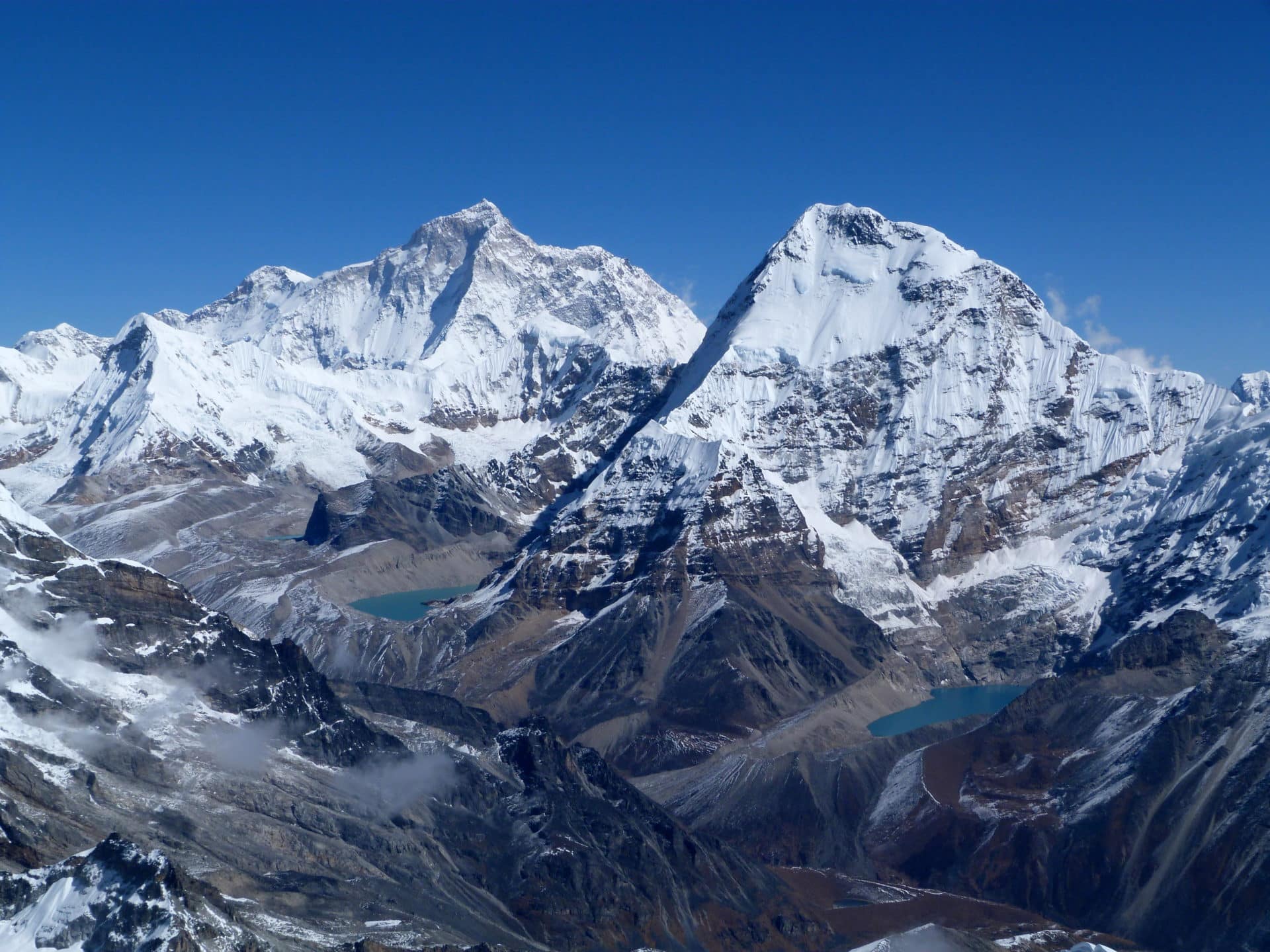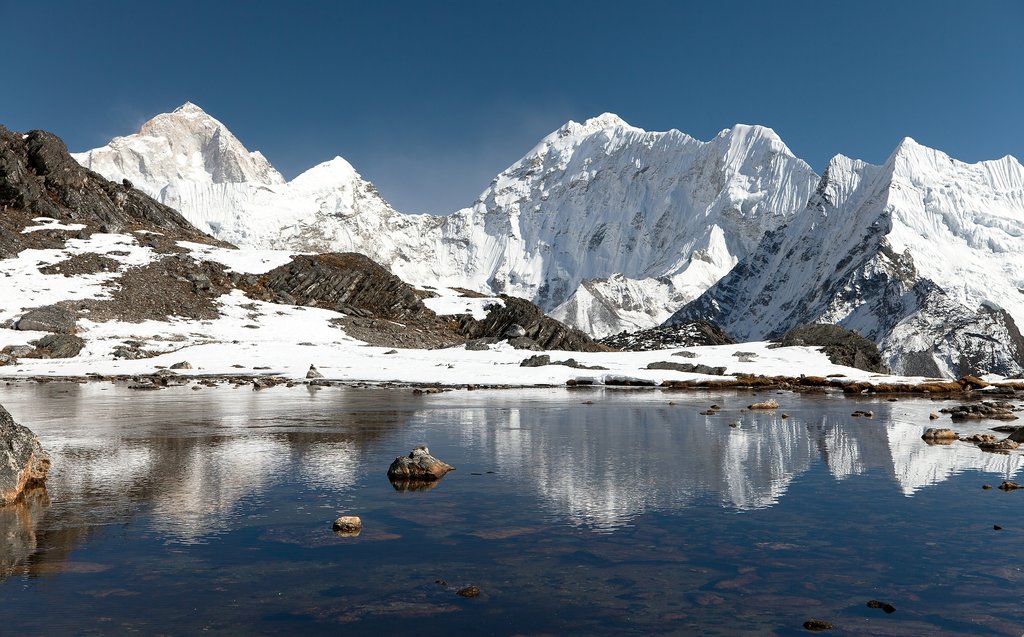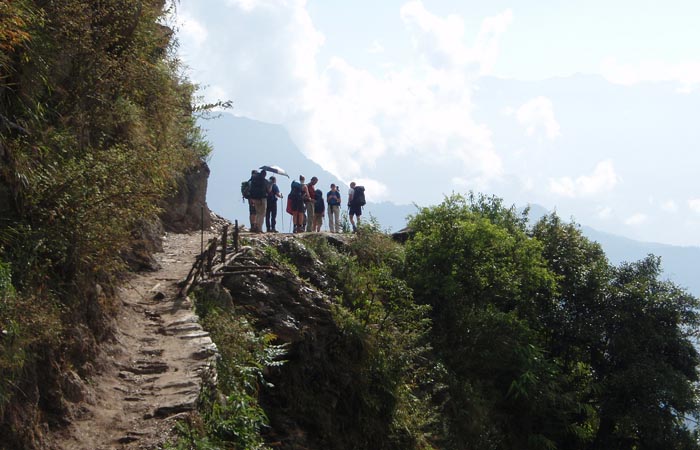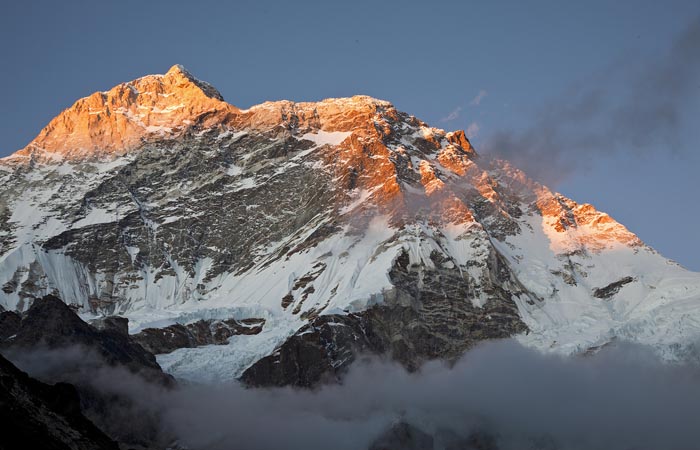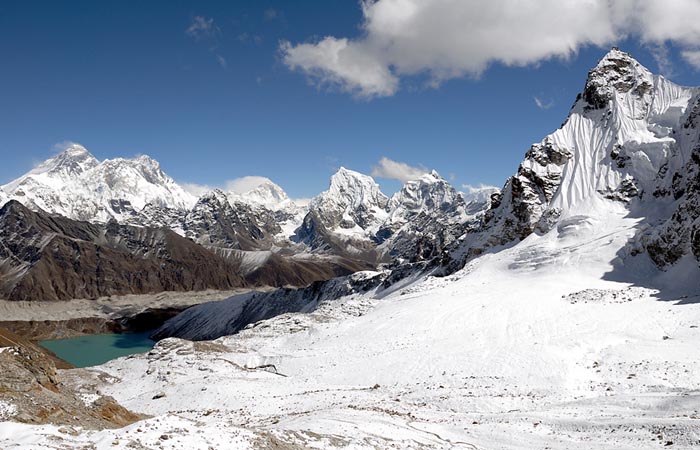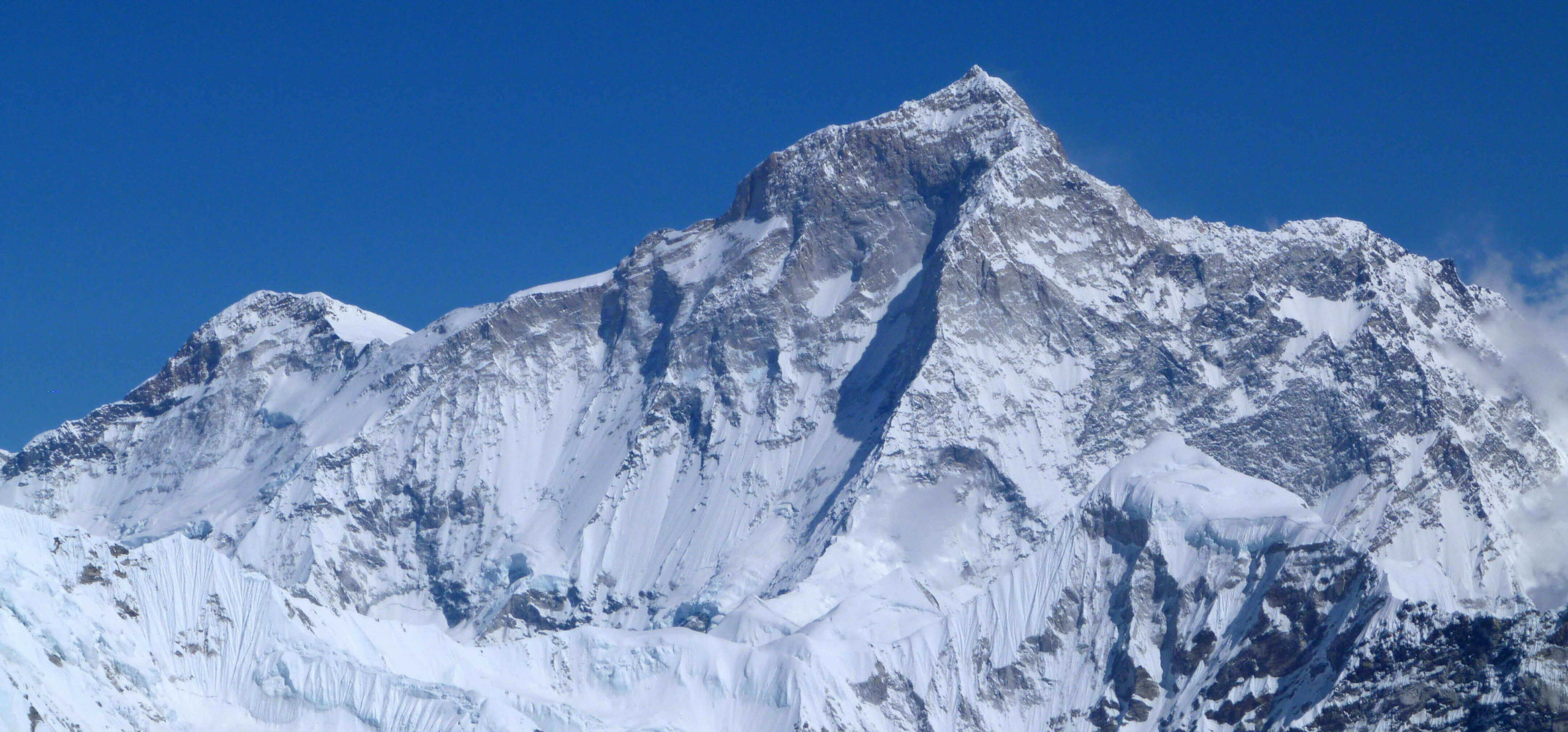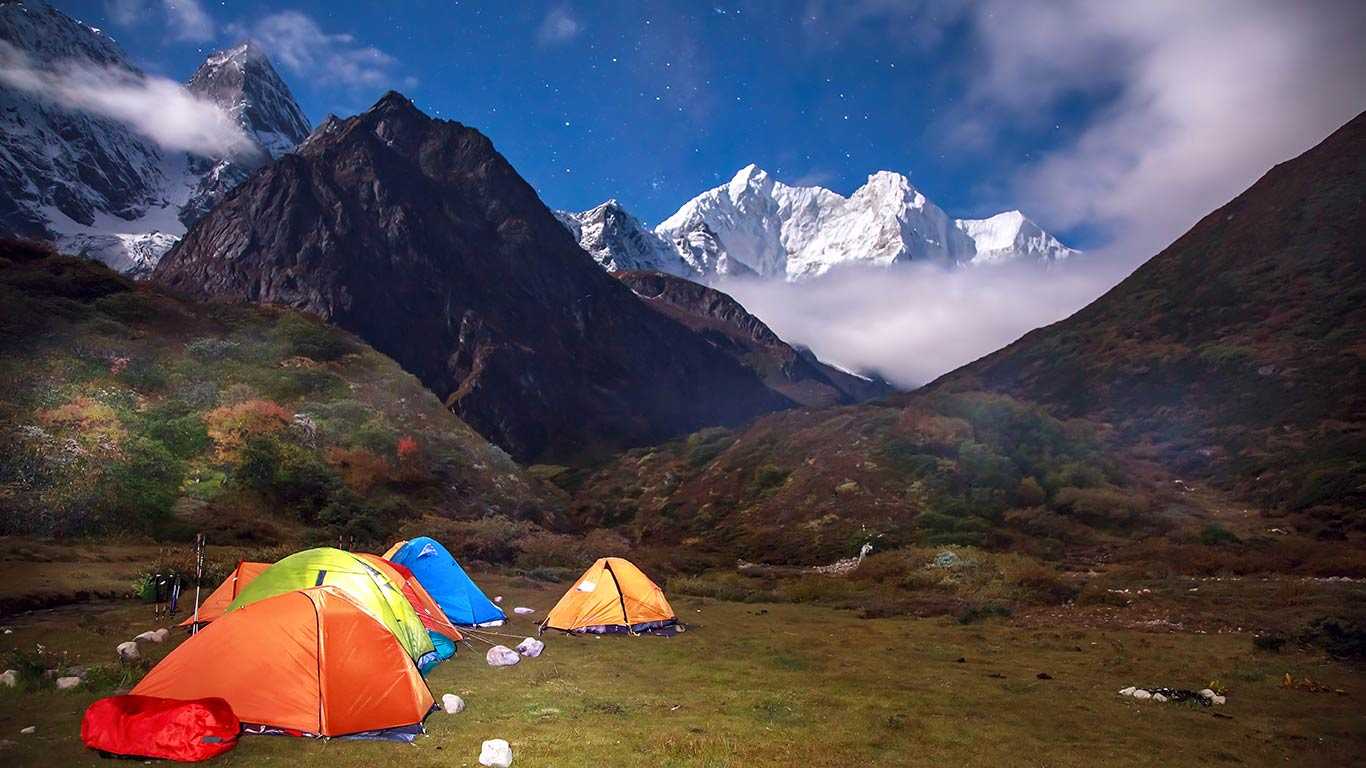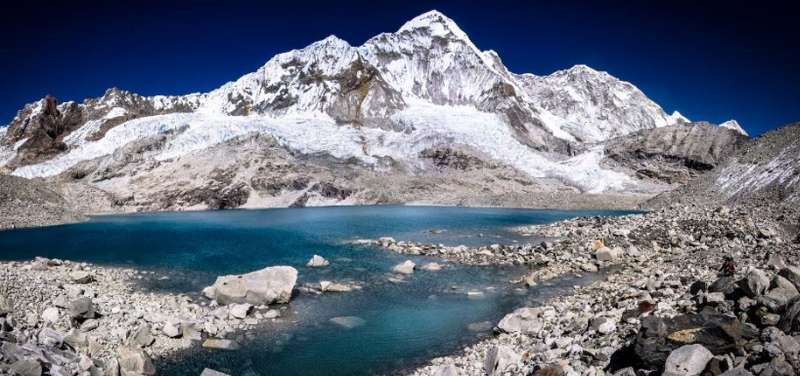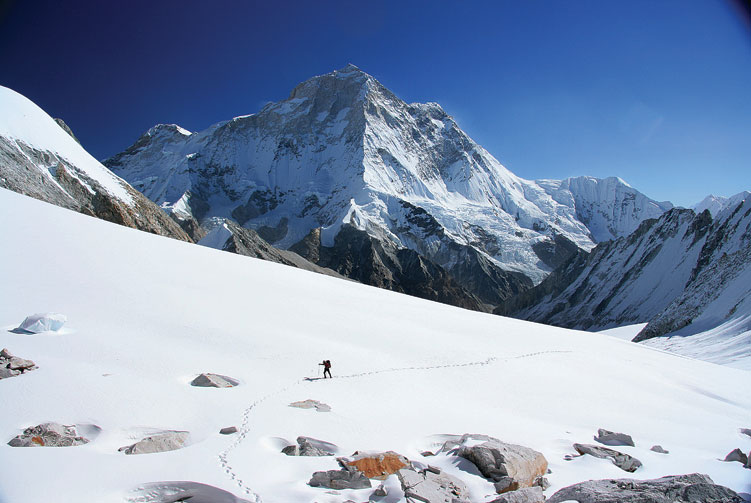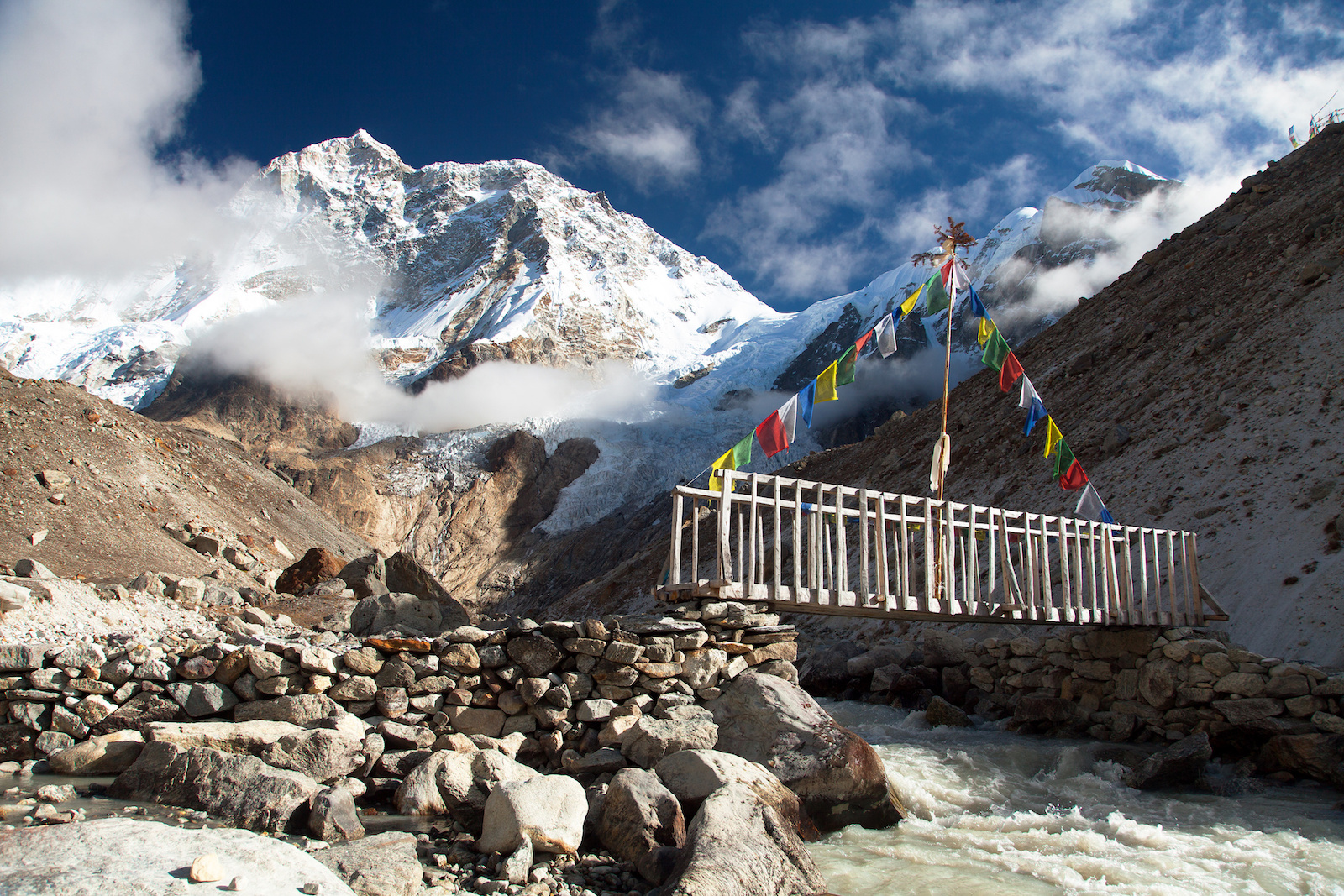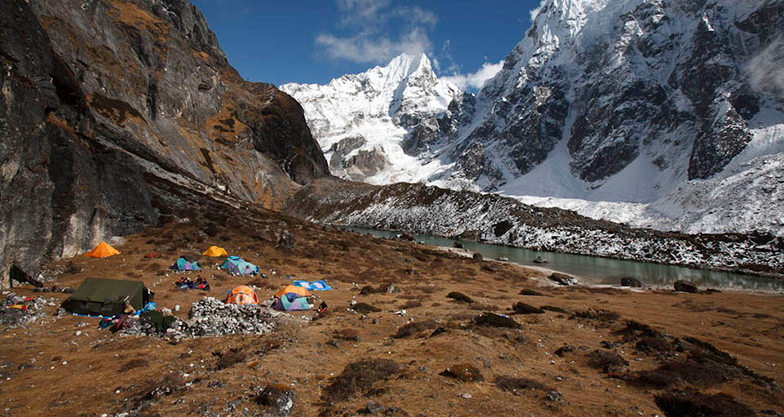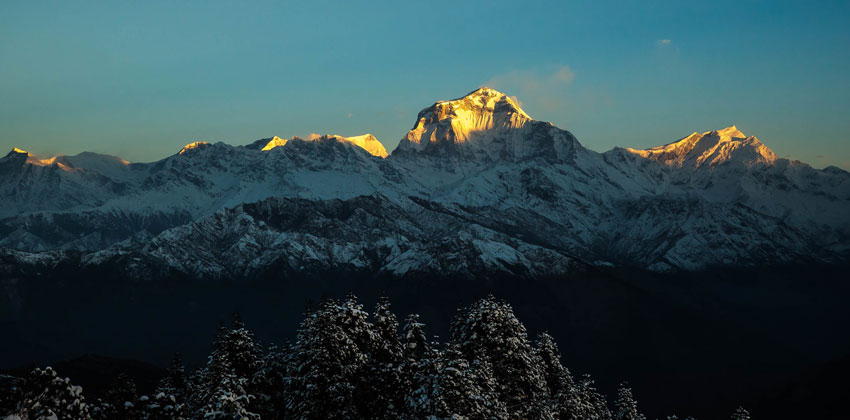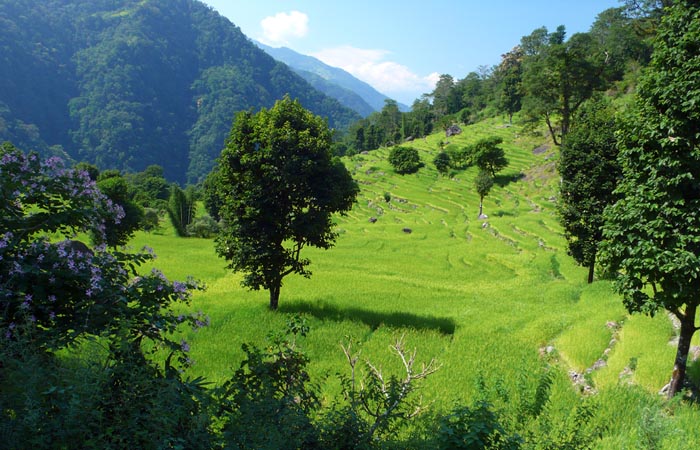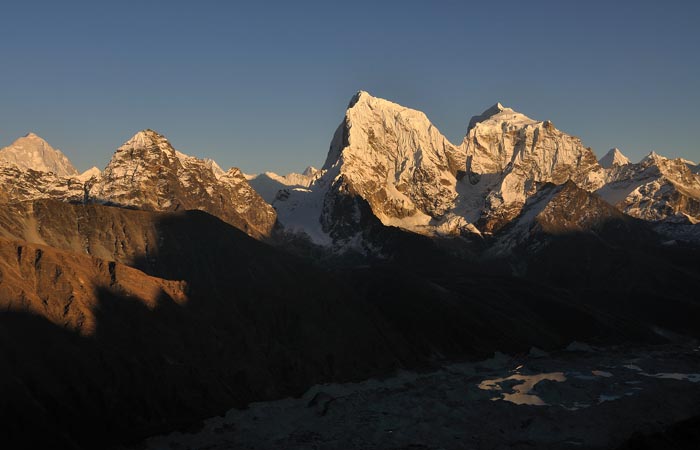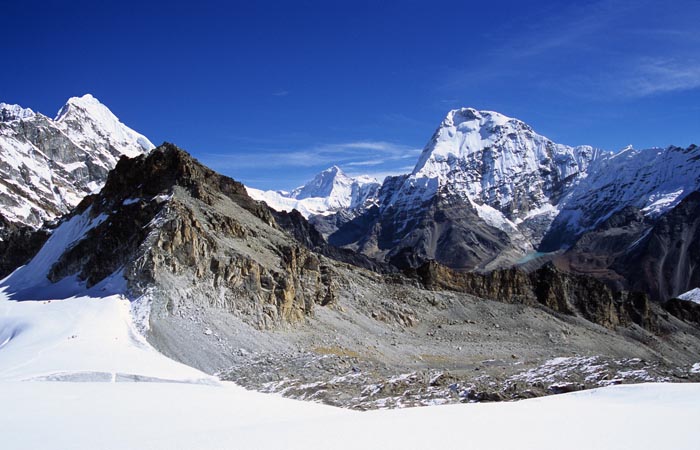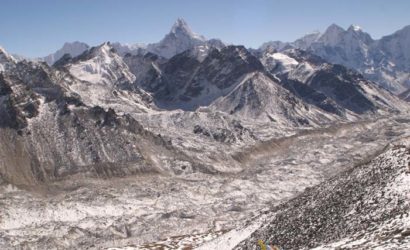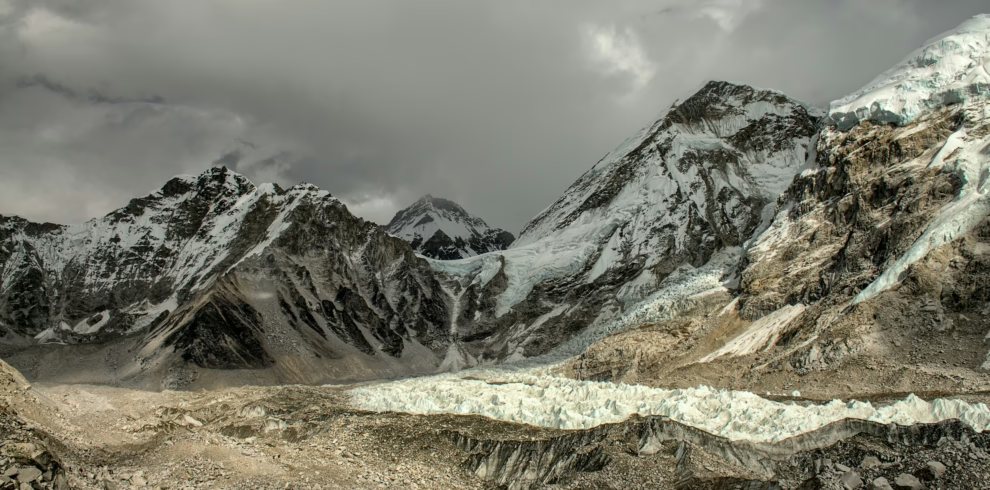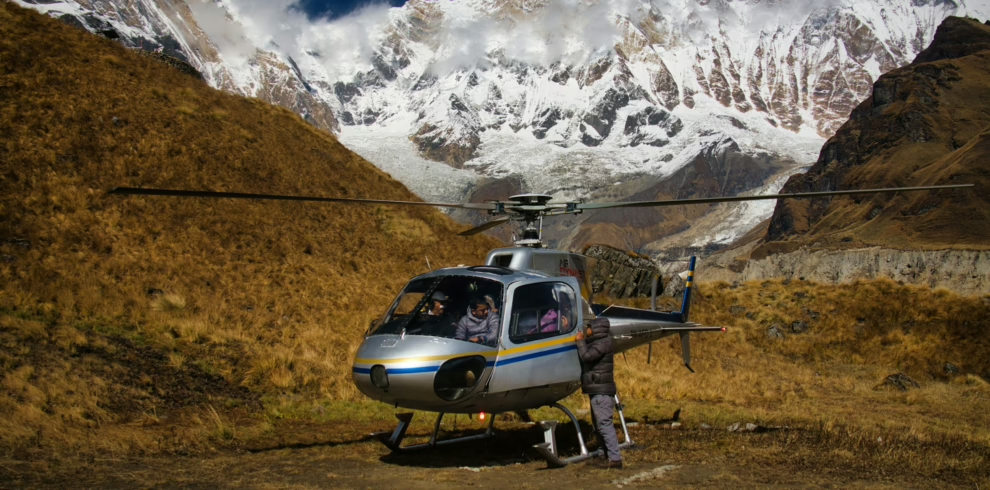The Makalu Base Camp Trek offers an unforgettable adventure to the foot of Mount Makalu, the fifth-highest peak in the world. Located in eastern Nepal, this trek seamlessly blends stunning natural landscapes with rich cultural heritage, making it a must for those passionate about both outdoor exploration and cultural immersion.
A key highlight of this trek is the chance to explore Makalu Barun National Park. Spanning over 2,330 square kilometers, this protected area is a haven for wildlife, including rare and elusive creatures like the red panda and snow leopard. As you journey through the park, you’ll be treated to jaw-dropping vistas of glaciers, waterfalls, and pristine forests that remain untouched by time.
Beyond its natural beauty, the trek offers a deep dive into the local culture. As you pass through traditional Sherpa villages, you’ll gain insight into the daily life and customs of these resilient mountain people. Known for their legendary hospitality, the Sherpas often invite trekkers into their homes for a warm cup of tea or a delicious meal, giving you a chance to connect with their vibrant way of life.
If you’re seeking an adventure that combines breathtaking scenery with authentic cultural experiences, the Makalu Base Camp Trek is the perfect choice.
Overview
The Makalu Base Camp Trek is a demanding journey that requires good physical fitness. The trail can be challenging, especially at higher elevations, but reaching the base camp makes the effort worthwhile. The best seasons for the trek are spring (April-May) and autumn (September-November), offering mild weather and clear skies. Although remote, the route is well-equipped with basic lodges and tea houses, making it accessible for trekkers of all fitness levels and experience.
The 19-day Makalu Base Camp Trek begins with a domestic flight from Kathmandu to Tumlingtar, a small town in the Sankhuwasabha district. From there, the trail ascends gradually through lush forests of rhododendron and bamboo, passing villages like Chichila and Num. You’ll cross several suspension bridges over the Arun River, enjoying stunning views of the river and valleys. Along the way, you’ll have the chance to interact with local communities, learning about their customs and culture.
As you progress, the landscape shifts to rocky, barren terrain. You’ll pass through Shipton La and Keke La passes, which offer panoramic views of the Makalu region’s peaks. The final stretch takes you through Yangri Kharka, Langmale Kharka, and Shershong to Makalu Base Camp at 4,870 meters. Here, you’ll stand at the foot of Mount Makalu, marveling at its sheer size. The trek then descends into the pristine Barun Valley, surrounded by towering peaks, and retraces the route back to Num. From Num, you’ll take a jeep or bus to Tumlingtar, then fly back to Kathmandu, completing your trek.
At Green Lotus Trekking, we offer a well-planned Makalu Base Camp Trek Itinerary, ensuring an unforgettable experience. Bookings are open for 2025 and 2026, and we’re happy to customize the trek based on your time, budget, and fitness level. For more details on costs, feel free to contact us.
Benefits of Booking the Makalu Base Camp Trek with Us:
- Airport pickup and drop-off (International and Domestic)
- Green Lotus Trekking duffle bag
- Green Lotus Trekking T-shirt
- Free Makalu Base Camp Trek map
- Oximeter to monitor blood oxygen levels
- Medical kits for emergency use
- Free luggage storage at Green Lotus Trekking store during the trek
What to Expect from the Makalu Base Camp Trek?
The Makalu Base Camp trek is a rewarding adventure offering a range of experiences:
- Stunning Views: Enjoy breathtaking views of the Himalayas, including the fifth-highest peak, Mount Makalu, with particularly spectacular sights from Shipton La Pass and the Base Camp.
- Cultural Experience: Trek through traditional Sherpa villages, where you can interact with locals, sample authentic food, and learn about the Sherpa culture.
- Wildlife and Nature: Pass through the pristine Barun Valley, home to diverse wildlife such as rare birds and mammals, and experience ever-changing landscapes, from lush rhododendron forests to barren, rocky terrain.
- Challenging Terrain: The trek involves long days of hiking at high elevations, requiring good physical fitness and mental preparation.
- High Altitude: The Makalu Base Camp sits at 5,000 meters, ideal for acclimatizing before attempting the summit of Makalu.
- Peaceful and Remote: Compared to other treks in Nepal, the Makalu Base Camp trek is less crowded, providing a peaceful and solitary experience.
Is the Makalu Base Camp Trek Right for You?
The Makalu Base Camp Trek is a physically demanding adventure suited for those who are well-prepared:
- Physical Fitness: The trek involves long, challenging days at high altitudes. A good fitness level is necessary to handle the terrain.
- Altitude Considerations: At 5,000 meters, altitude sickness is a risk. Acclimatization is crucial, and those with a history of altitude sickness should consult a doctor before starting.
- Experience Level: If you’re a first-time trekker, this trek might be too challenging. Consider a less demanding trek first.
- Time and Budget: The trek can last from 12 to 21 days, depending on the route and pace. Ensure you have enough time and budget for the journey.
- Personal Preferences: If you enjoy challenging treks and outdoor adventures, this trek could be an ideal fit for you.
Preparation for the Makalu Base Camp Trek
Proper preparation is key to a successful and enjoyable trek. Here’s what you need to consider:
- Physical Training: Start regular exercise well in advance, including hiking, running, cycling, and strength training, to build endurance.
- Altitude Acclimatization: Gradually increase elevation exposure to prepare your body for the high altitudes. Hiking at high elevations before the trek is beneficial.
- Gear and Equipment: Ensure you have the right gear, including appropriate footwear, clothing, and personal items. Most equipment can be rented or purchased in Kathmandu or along the trekking route.
- Insurance: Secure travel and medical insurance to cover any unexpected events or emergencies.
- Mental Preparation: Be ready for the physical and mental challenges of the trek. Maintain a positive mindset and a sense of adventure.
- Research and Planning: Plan your trek based on your fitness level and experience. Choose a reputable trekking company with a strong safety record.
Useful Information for the Makalu Base Camp Trek
Best Time to Trek
The best time to trek to Makalu Base Camp depends on your preferences. The two peak seasons are:
- Spring (March to May): Ideal for clear skies and mild temperatures, with rhododendron forests in full bloom, enhancing the trek’s beauty.
- Autumn (September to November): After the monsoon, expect clear skies, moderate temperatures, and excellent views, making it the best season for photography.
Though the trek can be done year-round, it requires good fitness and preparation, considering weather and personal preferences.
Meals Available on the Makalu Base Camp Trek
The trek provides the following meals:
- Breakfast (17 meals): Includes options like pancakes, oatmeal, eggs (omelets, poached, boiled), and various breads (Tibetan, buckwheat, chapattis), often with honey, jam, or apples.
- Lunch (15 meals): Dishes include dal bhat, soups, pasta, pizza, spring rolls, and local favorites like thukpa, macaroni, and dumplings.
- Dinner (16 meals): Offerings include dal bhat, Tibetan bread, soups, Sherpa stew, noodles, pasta, vegetable curry, and salads.
Accommodation on the Makalu Base Camp Trek
Accommodation is provided in basic teahouses or lodges, offering twin- or triple-bedded rooms with shared bathrooms. Amenities like hot showers, electricity (via solar), and Wi-Fi (spotty) are available. Be prepared for rustic conditions, especially at higher altitudes, and cold temperatures at night.
Camping is also an option for a more immersive experience, but it requires extra preparation and gear.
Trek Difficulty
The Makalu Base Camp Trek is challenging due to its remote location and high altitude. Key factors to consider include:
- Altitude: The trek reaches 5,000 meters, requiring acclimatization to avoid altitude sickness.
- Terrain: Expect steep inclines, rough trails, and long, strenuous days.
- Duration: The trek lasts 14 to 21 days, requiring physical and mental preparation.
- Weather: Conditions can be unpredictable, with rain, snow, and wind.
- Remote Location: Far from medical facilities, trekkers need to be self-sufficient.
Travel Insurance Requirements
Ensure your travel insurance covers:
- Medical Expenses: Including emergency evacuation.
- Trip Cancellations: For unforeseen events like natural disasters.
- Lost/Stolen Gear: Coverage for personal items and camping equipment.
- Adventure Sports: Including trekking-related accidents.
- 24/7 Assistance: Emergency support and travel advice.
Review your policy to ensure it meets the trek’s specific needs and carry a copy with you.
Altitude Sickness and Remedies
Altitude sickness is common at high altitudes, and the trek’s elevation (2,500 to 5,000 meters) puts trekkers at risk. Remedies include:
- Acclimatization: Gradually adjusting to altitude by resting and walking slowly.
- Hydration: Drinking at least 3-4 liters of water per day.
- Medications: Acetazolamide and ibuprofen can help under a doctor’s guidance.
- Oxygen: Carry a portable oxygen canister for severe cases.
- Descent: If symptoms persist, descend to a lower altitude under medical guidance.
Packing List for the Makalu Base Camp Trek
Essential items include:
- Clothing: Warm and waterproof layers, including a down jacket, thermal underwear, and rain gear. Comfortable trekking clothes are also important.
- Footwear: Sturdy trekking boots, socks, and gaiters.
- Sleeping Gear: Warm sleeping bag, pad, and tent if camping.
- First Aid Kit: Including pain relievers, band-aids, and blister treatment.
- Hygiene Items: Toothbrush, wet wipes, toilet paper, and hand sanitizer.
- Backpack: A 50-liter capacity pack for gear and supplies.
- Hydration Gear: A water bottle or hydration bladder, plus a water purification system.
- Food/Snacks: Energy bars, nuts, dried fruit, and a lightweight stove.
- Navigation Gear: Map, compass, and GPS device.
Guide and Safety on the Trek
A guide is essential for safety and enhancing your experience. Benefits include:
- Local Knowledge: A guide offers expertise on the trail, weather, and culture.
- Safety: Ensures proper acclimatization and provides emergency assistance.
- Cultural Experience: Helps communicate with locals and provides insights into the region’s customs.
- Logistics: Handles permits, porters, and accommodations, reducing stress.
Booking Procedure
Book with Green Lotus Trekking, a government-approved, reputable company with experienced guides. A 10% deposit is required, with the remainder due upon arrival. Enjoy a hassle-free experience with a highly recommended local firm.
Highlights
- Scenic Flight: The trek begins with a stunning flight from Kathmandu to Tumlingtar, offering panoramic views of the eastern Himalayas, including snow-capped peaks and rolling hills.
- River Valleys: The trail passes through picturesque river valleys, providing rest spots and views of waterfalls and gorges, making it a visual treat.
- Monasteries and Stupas: Along the way, you’ll encounter monasteries and stupas, offering spiritual respite and insight into the region's cultural and religious heritage.
- Mountain Views: Enjoy breathtaking views of Mount Makalu, the fifth-highest peak in the world, along with other stunning peaks like Chamlang, Baruntse, and Ama Dablam.
- High-Altitude Passes: The trek crosses several challenging high-altitude passes, including the Shipton La Pass, which rewards trekkers with magnificent views of surrounding peaks and valleys.
- Challenging Adventure: This trek demands physical fitness and mental preparation but offers an unforgettable adventure with opportunities for personal growth and self-discovery.
- Diverse Landscapes: Traverse lush forests, alpine meadows, and high-altitude deserts, while spotting wildlife like Himalayan tahr, musk deer, and possibly even a snow leopard.
- Rustic Lodges: Rest in welcoming teahouses and lodges that offer a glimpse into local culture and provide a much-needed retreat after long trekking days.
- Cultural Experience: The trek takes you through the culturally rich Solu-Khumbu region, where you’ll learn about Sherpa customs, traditions, and beliefs.
- Warm Hospitality: Expect warm welcomes from local communities, enhancing the trek with their genuine hospitality and making your journey even more memorable.

